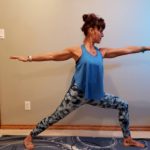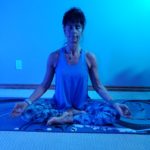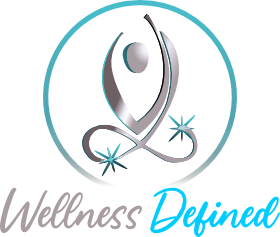Do not underestimate the power of the breath
Focused breath-work can change your life, your health and your mind-set
The breath is the first thing we have when we enter this world and the last thing to leave us when we exit this world.
The last few weeks our intention was to observe more and analyze less. Many insights can be gained by this conscious awareness practice. Insights into our thoughts, our tendencies, our emotions and our stress triggers and how they can create havoc in our lives.
So now that we are aware of our tendencies and triggers, what can we do to respond differently?
Breathe
When we step back and take some deep belly breaths – we activate the part of our nervous system that governs our rest and digest response
Conscious breath-work is the portal into accessing this system
There are 2 parts to our nervous system;
- Sympathetic nervous system (SNS) that governs our fight/flight or freeze response.
- Parasympathetic nervous system (PNS) that governs our rest and digest response.
Our Sympathetic Nervous System (SNS)
Many of us live in “doing” mode for most of our day and if we are not “doing” then we are most likely “thinking” – both of which puts our SNS on alert. Whether we are working, organizing, planning, procrastinating, worrying or in a state of delight, encouragement, fear, overwhelm, anxiety or simply feel the need to control or do something – our SNS is in overdrive trying to get the next need met or the to-do-list checked off.
We need to learn to pause
We need to learn to breath
Breath awareness is one very effective tool that we all have within us that has the ability to balance an over active SNS AND it doesn’t require a huge time commitment.
It does require awareness and the ability and willingness to step back and take 5 minutes to consciously breathe.
Our SNS when in balance, is good in many ways as it helps us to accomplish our goals and intentions for the day.
It helps us get things done.
Our SNS when out-of-balance puts us in survival mode and triggers our stress hormones.
The key is to notice when our SNS is out-of-balance.
Here are a few examples of what we might feel when our SNS is OUT OF balance;
- worried
- irritated
- discouraged
- exasperated
- jittery
- uptight
- numb
- panicked
- lethargic
- angry
- impatient
- withdrawn
- resentful
Our physical body will show signs of strain and tension – most likely in our forehead, eyes, jaw, shoulders, chest & belly.
Here are a few examples of what we might feel when our SNS is IN balance;
- inspired
- energetic
- carefree
- grateful
- curious
- adventurous
- happy
- interested
- proud
- expansive
- trusting
- quiet
- pleased
Our physical body could still show signs of tension but in a less evasive and detrimental way.
When you experience any of the feelings that signal your SNS is out of balance, take a few moments to step back and breathe deeply into your belly, you can even hold your breath there for a moment and then when you exhale soften your eyes, soften your jaw, soften your shoulders and soften your belly as you release the breath completely from your belly.
If this seems like a task that will not help you, then most likely you spend most of your time in this space of an overactive SNS and most likely this state feels “normal” to you as you have become conditioned to survive in this mode.
This does not bode well for your health, your wellness and most importantly for a good night’s sleep
Sleep is one of the most effective ways to improve our health
- Sleep is when our body eliminates toxins
- Sleep is when our body rests, repairs and renews
- Sleep boosts our immunity
- Sleep reduces our chance of weight gain
- Sleep improves our memory and focus
- Sleep is when our mind unconsciously processes our experiences
- Sleep increases our creativity
Do not go to bed in SNS mode
If we allow ourselves to stay in this overactive state of stress without taking the time in our day to lean back and breathe with awareness, we will have a difficult time getting to sleep, staying asleep or getting a deep enough sleep to feel rested the next day.
According to Ayurveda, the hours between 10pm and 2am is when our bodies digest everything from food to our daily experiences. This is a vital time for our body to heal. If we are awake during this time, our body will not only miss this vital healing time but it will not be able to digest everything effectively.
Getting to sleep during these hours is beneficial for our bodies self-regulating healing and it is the ideal time to access our deepest sleep.
This is where our parasympathetic system comes in
Our Parasympathetic Nervous System (PNS)
Our parasympathetic nervous system has 2 functions;
Rest and digest. When we take the time to activate our PNS our body and our mind gets to rests from all the input coming in from our senses and the outer world. Conscious breath-work is a great tool and practice to shift us from SNS to PNS within minutes. Meditation is an additional beneficial tool to lengthen this experience of rest and digest (at any time of the day)
Daily practices are needed to turn on the parasympathetic nervous system
When we take the time to activate this system with simple breathing practices before we go to sleep, (or anytime during the day) we have the capacity to heal our body, heal our mind and digest not only our food effectively but our experiences from the day as well. Our thoughts get digested, our feelings and emotions get digested and over time with consistency, our stress triggers can be digested.
This is important because whatever we do not digest properly through a restful sleep we take with us into the next day. These unprocessed experiences, emotions, feelings and food then build momentum leading to;
- More stress triggers
- Mood swings
- Aggravated or sluggish digestion
- Depleted energy
- Illnesses
- Mental and physical discomforts in the body.
It is important to understand that we are hardwired to be in survival (SNS) mode. Resting or sleeping does NOT automatically turn on our parasympathetic system – we need our daily practices.
Coherence breathing before we go to bed is one of the best ways to activate our PNS, calm our mind and release stress from our day.
Coherence breathing technique… 5/5/5
- In a comfortable upright seated position, relax your shoulders as best as you can, soften your facial muscles, unclench your jaw and let your belly relax outward. Place a hand on your belly
- Breathe in through the nose for 5 seconds and feel your belly extending out against your hand.
- Breathe out through your nose for 5 seconds and feel your belly moving back inward, away from your hand
- Repeat for 5 minutes, finding a rhythm and flow to this sequence
- If need be – adjust the count of your breath to avoid struggling to get to 5 or hindering it if you want to go deeper than 5 (find YOUR flow) *an additional option would be to extend the exhale further adding on a count to the exhale.
The key is to practice this breathing technique in the morning and evening for 5 minutes and any other time during the day when we are experiencing tension or strong emotions. The more often we practice this technique during the day, the quicker our PNS will respond to this practice activating our rest and digest mode. With consistency we are creating the best environment for a deep, restful healing sleep.
This Week’s Intention Setting
- “Today, I practice breathing fully”
- “Today, I practice coherence breathing every morning and every evening”
- “Today, I take steps to activate my rest and digest system”
As with all new concepts, practices and intentions; be gentle and compassionate with yourself.
If you are interested in any private coaching sessions; Contact Leslie at 780 722-3442 or email at leslie@wellnessdefined.ca
Private Ayurveda sessions also available.
Let’s tap this in…














